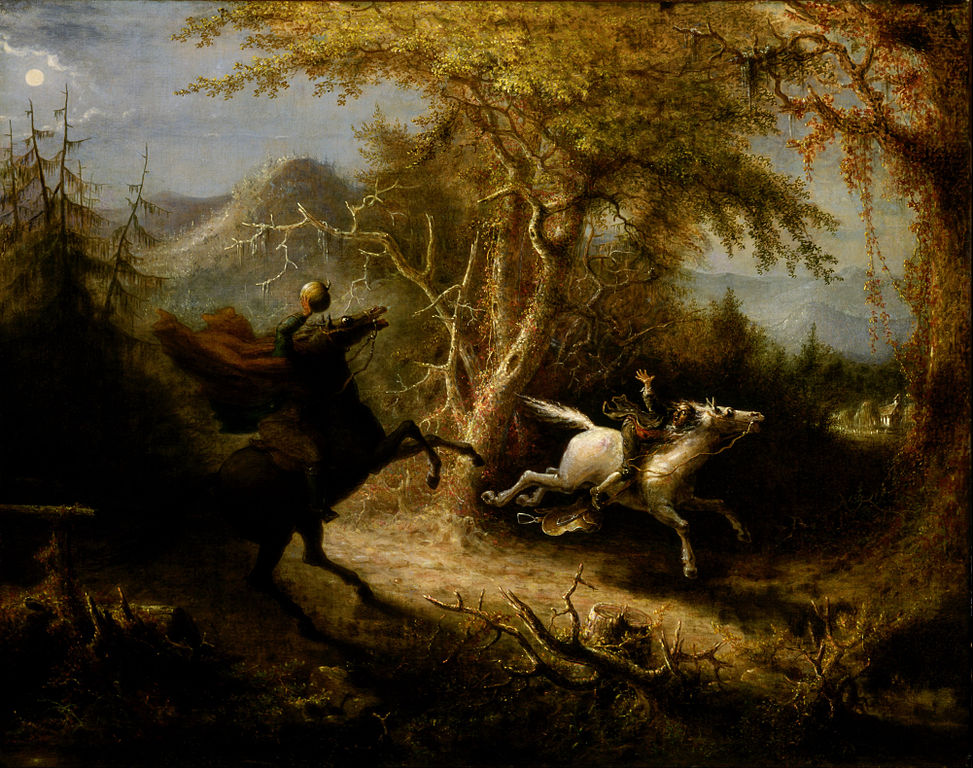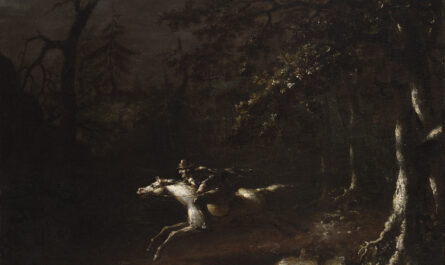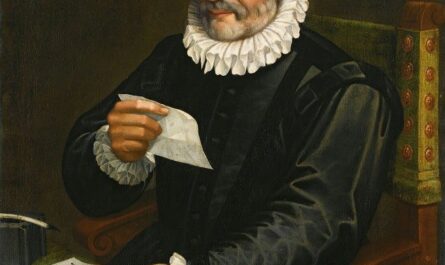It’s that time of year again – when the days grow shorter, the leaves turn crunchy, and conditions are ripe for revisiting Washington Irving’s spooky tale, “The Legend Sleepy Hollow”. His descriptions of idyllic New England farm country populated by superstitious locals swapping stories of encounters with ghosts and the supernatural are the perfect way to enjoy the autumnal season. The centerpiece of Irving’s story, of course, is the frightening figure of a Headless Horseman, mounted atop an angry black steed, holding his recovered head on the pommel of his saddle, and terrorizing anyone unfortunate enough to cross his path.
The Headless Horseman of Sleepy Hollow is described as a Hessian who lost his head to a cannonball blast during the Revolutionary War. As you know, I revisit this favorite story every October and write about new observations I discover. This year, Irving’s description prompted me to do a bit of research on this group of soldiers. Moving to Germany brought to my attention the German influences on this tale, so today, we will look at who these Hessian soldiers were and how they ended up in the American colonies.
Because the British kept a small standing force, they quickly found themselves in need of troops in 1775, when American colonists began fighting in open conflict in Massachusetts. The British engaged thousands of foreign troops to fight on their behalf during the American Revolutionary War; historians estimate about 30,000 of these were Hessians. The British use of “large armies of foreign mercenaries” was actually listed as one of the colonists’ twenty-seven grievances against George III in the Declaration of Independence, and is a reference to these very soldiers.
During the late 18th century, what is now modern Germany was a group of smaller Germanic states. As a major source of income, these states maintained auxiliary troops which were hired by other European nations to fight in battles and wars. This was such a common practice, in fact, Hessian troops fought on both sides of several European conflicts. The term “Hessian” referred to a person from the principalities of Hesse-Kassel or Hesse-Hanau. More than half of the German soldiers fighting in the colonies were from Hesse-Kassel, while the remainder hailed from Hesse-Hanau and other states. As a result, the term “Hessian” was used to describe all German troops, regardless of their state of origin.
Friedrich Wilhelm II, the sovereign (Landgraf) of Hesse-Kassel, was brought up a soldier and grew to love the discipline instilled in him by martial life. He believed the only way to protect his borders was to establish a strong and competent army. He aim to model his army on the Prussian military, which he considered to be the greatest in Europe. A self-professed man of the Enlightenment, all his officers were highly educated and spoke various languages. Promotion was based on meritocracy, rather than aristocratic lineage. His army, however, also used draconian methods to encourage strict discipline, including whippings and running the gauntlet. Deserters were hanged. By the time of the Revolutionary War, Wilhelm had created one of the most disciplined and formidable armies in Europe.
This reputation extended to the American colonies as Hessians landed there in early 1776. The first units to arrive in the colonies embarked from Brunswick and Kassel and represented the finest of this army. Hessians wore their own colors and were deployed by the unit, not as individuals. Infantry soldiers would have had a very basic education, consisting of writing and rudimentary French. They did not understand English upon arrival in the colonies, and this added to their fearsome reputation among the American colonists, as well as the British army they were fighting alongside. The Hessians were exemplary in military precision and firearms, however, and diaries from Hessian officers express contempt toward the untrained colonists they were fighting, and shock at the rebels’ lack of proper uniforms and guns.
Hessian units were stationed from what are now parts of Canada, all the way to Florida. During the war, Hessians captured and held by American troops were often put to work on farms of German immigrants. After the war, an estimated 3,000 ended up settling in parts of Pennsylvania, Virginia, and Massachusetts, as well as farther north into Canada.
With a clearer understanding of their training and discipline, it’s not difficult to imagine our lanky schoolteacher being frightened away and never looking back after seeing such a sight. What an imposing figure such a soldier would make on horseback, as Ichabod crept his way back home through the dark and noisy woods at night! The Hessians were formidable on their own merit, and would have become even more so following Ichabod’s evening of ghost stories and swift rejection from the object of his desire. While tales of headless horsemen have been around for centuries, Americans and Britons alike reading this tale in the decades after the War would have immediately understood the physicality and doom encompassed in this reference to the Hessians. What a credit to Irving’s ability to pack rich references into such a short and entertaining story.
Sources:
Irving, Washington. “The Legend of Sleepy Hollow, Rip van Winkle, and Other Stories”. (The “Legend” was originally published in 1820.)
Lovell, Edward J. “THE HESSIANS and the other GERMAN AUXILIARIES OF GREAT BRITAIN IN THE REVOLUTIONARY WAR”. Harper and Brothers Publishers. 1884.
George Washington’s Mount Vernon website. “Hessians” page.
Lovettsville (VA) Historical Society.
Previous editions of Sleepy Hollow entries are here, here, and here.
Image: “Ichabod Flying from the Headless Horseman” by John Quidor, 1828. LICENSED UNDER PUBLIC DOMAIN VIA WIKIMEDIA COMMONS




